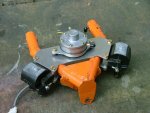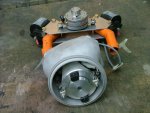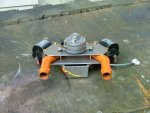I am a newbee again... sorta!
Years ago (30) I built a Bensen BM8 to spec. Shortly there after I changed to a seat tank and Alum wheels just for looks. It had a 72hp Mac.
Bill parsons told me he would guarantee the engine would quit when I needed it the most. That coupled with several friends getting hurt or worse I sold it.
Now I am reading that it may have been close to the correct CLT.
I want to get back into Gyro's and have Mac 90 just waiting if I go that route.
I need a lot of input on what to build or buy and if the BM8's are truly safe with the seat tank and alum wheels?
Also does the exhause change it back since going away from the steel tank and steel wheels was what made it safer? Help!
JD
Years ago (30) I built a Bensen BM8 to spec. Shortly there after I changed to a seat tank and Alum wheels just for looks. It had a 72hp Mac.
Bill parsons told me he would guarantee the engine would quit when I needed it the most. That coupled with several friends getting hurt or worse I sold it.
Now I am reading that it may have been close to the correct CLT.
I want to get back into Gyro's and have Mac 90 just waiting if I go that route.
I need a lot of input on what to build or buy and if the BM8's are truly safe with the seat tank and alum wheels?
Also does the exhause change it back since going away from the steel tank and steel wheels was what made it safer? Help!
JD



